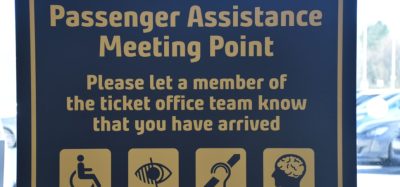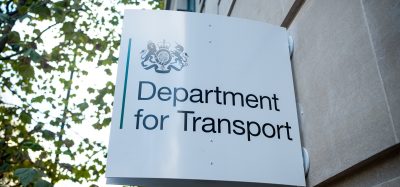EBA in a liberalised railway market
Posted: 5 April 2010 | | 1 comment
With the German Railway Reform in 1994, the sovereign functions were transferred from the former state railways Deutsche Bundesbahn and Deutsche Reichsbahn to the Eisenbahn-Bundesamt (EBA). These comprise primarily the issuing of approvals and the supervisory function. The approval function of the EBA encompasses the authorisation of technical products and systems in the form of authorisations for placing into service. It does extend, however, to ‘authorising’ companies by way of licences and issuing safety certificates and/or safety authorisations to railway undertakings and/or infrastructure managers based on an audit of their safety management systems. Since 2007, the EBA has thus been the safety authority pursuant to Article 16 of the Safety Directive.
With the German Railway Reform in 1994, the sovereign functions were transferred from the former state railways Deutsche Bundesbahn and Deutsche Reichsbahn to the Eisenbahn-Bundesamt (EBA). These comprise primarily the issuing of approvals and the supervisory function. The approval function of the EBA encompasses the authorisation of technical products and systems in the form of authorisations for placing into service. It does extend, however, to ‘authorising’ companies by way of licences and issuing safety certificates and/or safety authorisations to railway undertakings and/or infrastructure managers based on an audit of their safety management systems. Since 2007, the EBA has thus been the safety authority pursuant to Article 16 of the Safety Directive.
With the German Railway Reform in 1994, the sovereign functions were transferred from the former state railways Deutsche Bundesbahn and Deutsche Reichsbahn to the Eisenbahn-Bundesamt (EBA). These comprise primarily the issuing of approvals and the supervisory function. The approval function of the EBA encompasses the authorisation of technical products and systems in the form of authorisations for placing into service. It does extend, however, to ‘authorising’ companies by way of licences and issuing safety certificates and/or safety authorisations to railway undertakings and/or infrastructure managers based on an audit of their safety management systems. Since 2007, the EBA has thus been the safety authority pursuant to Article 16 of the Safety Directive.
However, the EBA’s responsibility extends to more than the conventional functions of a safety authority. The enforcement body for rail passenger rights, the approval for state financialresources to be used in the railway infrastructure and monitoring that such resources have been used as intended are examples. The EBA is responsible for federal railways and for railways based in other countries for their operation within Germany. The EBA performs its functions according to its legal mandate, which is based on railway safety. Nevertheless, the EBA is aware that the approvals that it issues are a market access requirement for manufacturers and operators and that inappropriate restrictive procedures puts the railway market in Germany at a disadvantage in international competition. The EBA therefore endeavours to involve the position of both the market and the operators in its decision-making processes. However, since the Railway Reform, the railway market has undergone grave changes.
The increasing competition in the railway market – and from road transportation – is placing the railways under a cost pressure. But this must not have a negative impact on safety. Compared to the previous state railway system, the operators have been transferring an increasing number of development activities to the manufacturers. Nowadays, the railways expect products that are ready-to-use and have already undergone the necessary approvals. The manufacturers are on the right track to meet the requirements of this role. However, this conversion is inevitably affecting the interface to the EBA and causing it to incur a higher level of expenditure, especially regarding approval processes. Especially in case of malfunctions the EBA has to find a balance between consistently fulfilling its legal order and not hindering the Railway market.
In the best case the legal obligation of the EBA and the needs of a liberalised railway market are linked together. This means to accompany the manufacturers in developing products that are suitable for approval and can be operated safely. The art is to combine the two so that the rail system and its users benefit from the whole. The complete liberalisation of the goods transport market and partial opening of the passenger transport markets in Europe are linked to a progressive harmonisation of the technical regulation based on the so-called ‘interoperability directives’. These are being substantiated by ‘Technical Specifications for Interoperability’. In this context, the EBA performs an active role as an ‘authorising authority’ by largely avoiding double inspections, for example, in cross-border approval projects for vehicles that are used in cross-border traffic by concluding ‘Cross- Acceptance Agreements’ with other safety authorities in Europe. This leads to cutting of costs for both the industry and the railways.
This technical harmonisation is rounded out by improving the transparency of the safety requirements and safety-relevant processes. The EBA has also made active contributions to the discussion on these safety methods (CSM). It plays a coordinating role in the national implementation of the CSM for the risk assessment and evaluation that is directly applicable as a European regulation for structural subsystems from July 2010 onwards. At the suggestion of the European Railway Agency, the EBA is applying the CSM for issuing safety certificates and safety authorisations to railway undertakings/infrastructure managers before it comes into force. This has revealed that following the abolishment of the RIV and the opening of the railway transport markets to private railway companies, the freight wagon sector in particular is still in a transformation phase. The railways are working with the private wagon keeper to develop processes that will enable them to demonstrate that the control of all the risks, as required by the safety directive, have been monitored in a safety management system certifiable according to the CSM. This problem is currently under intense discussion based on a solution proposed by the sector.
The EBA is making an important contribution in this regard. In conclusion, I would like to stress that my statements are not intended to convey the impression that the EBA is claiming to know better than the industry which technical and systemic solutions are optimal for the rail transport system. Indeed, it is the manufacturers and operators of railway products and systems that are responsible for finding sustainable technical and systemic solutions. The role of the EBA focuses on intervening if it gains knowledge either by active or reactive supervision that the safety of the rail system is in jeopardy. In the future, the EBA will only be able to efficiently continue fulfilling this task with sufficient and competent staff.







